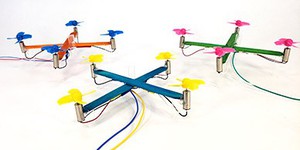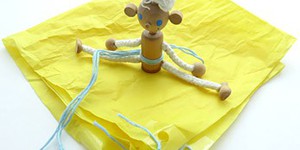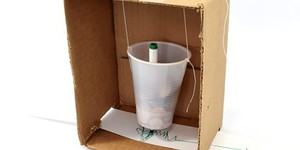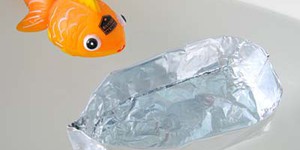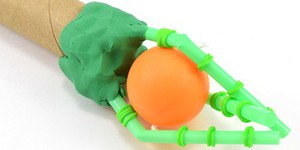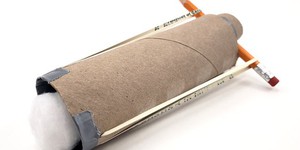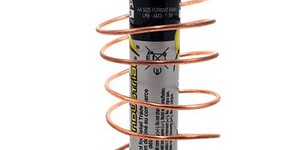STEM Activities for Kids (481 results)
|
Select a resource
Sort by
|
STEM Activity
127 reviews
Quadcopters, also called drones, are a fun and popular toy. Explore the world of drones as you build your own mini drone using popsicle sticks in this fun activity.
See this page for a complete list of our mini drone projects. You may wish to do the projects in order.
Read more
STEM Activity
111 reviews
Have you ever wondered what a parachute and an open rain jacket have in common? They both trap air and slow you down when you move fast! In this activity, you design a parachute for a miniature action figure. Tissue paper or a plastic bag and a few strings is all it takes to make your figure into an expert skydiver.
Read more
STEM Activity
103 reviews
Do you think you can build a working speaker out of paper? If you like listening to music, this project is for you!
Read more
Featured
STEM Activity
59 reviews
Did you know that the seaweed you've seen in the ocean or even eaten as a snack is inspiring innovators to imagine new materials? Large
brown algae, like kelp, contains polymers—long chains of molecules—that are more environmentally friendly than the ones in most plastics. These natural polymers (alginates) could eventually be used to create sustainable everyday objects. Try your hand at using a bit of chemistry to turn biodegradable polymers from algae into your own custom…
Read more
STEM Activity
51 reviews
Did you know that there are more planets than stars in our galaxy? All of these planets circle around a star, but only eight of them—Mercury, Venus, Earth, Mars, Jupiter, Saturn, Uranus and Neptune—circle around the Sun—the star in our solar system. This activity explores the relative size of these eight planets. Is one bigger than the others, or are they all about the same size?
Read more
STEM Activity
180 reviews
Scientists study earthquakes so we can understand them better and hopefully one day predict them so we can save thousands of lives. A seismograph is a tool scientists use to record earthquakes and measure their strength. In this activity you will build your own seismograph using simple materials.
Read more
STEM Activity
141 reviews
Have you ever wondered how a ship made of steel can float? If you drop a steel bolt in a bucket of water, the bolt quickly sinks to the bottom. Then how can a steel ship float? And better yet, how can a steel ship carry a heavy load without sinking? It has to do with the density, or the mass per volume, of the ship (and its cargo) compared to the density of water. In this science activity, you will make little "boats" out of aluminum foil to explore how their size affects how much weight…
Read more
STEM Activity
154 reviews
Do you know anyone who has had a hand or an arm injured in an accident? What if you could build them a robotic hand to help them accomplish everyday tasks like writing, picking up a glass, or opening a door? This activity will show you how to build a simple robotic hand using common household materials.
Read more
STEM Activity
244 reviews
Have you ever stretched and launched a rubber band at someone? Put that energy to good use and build a rubber band-powered cotton ball launcher in this fun activity!
Read more
STEM Activity
61 reviews
Bridges come in all shapes, sizes, and materials. What makes a bridge the strongest? Find out in this fun activity as you build simple bridges with paper and test to see how much weight they can hold.
Read more
STEM Activity
106 reviews
What do you need to make a motor? Not much! In this quick activity, you will make a simple motor using nothing but a battery, magnet, and a piece of wire.
Read more
|
Explore Our Science Videos
Slippery Slopes - STEM activity
Explore the Wet Sand Effect – STEM activity
Video: Paper Airplane Launcher


